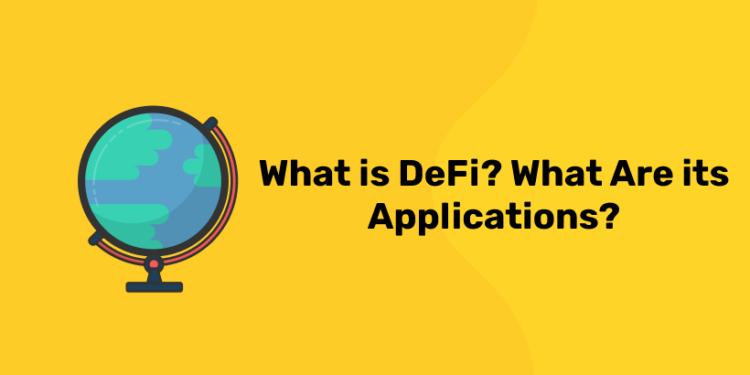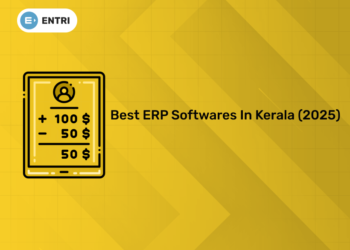Table of Contents
DeFi is an anonymous system that completes traditional financial transactions without any use of, or interference from, an intermediary or governing body. Instead of using a neutral third party, DeFi uses an application through blockchain technology, also known as DeFi protocol, to connect users directly; its products and smart contracts maintain fulfillment of these agreements. While it’s possible to build DeFi apps on other blockchains, Ethereum is the most popular and accessible in 2021.
The popularity of DeFi rapidly expanded in 2020 and 2021. The value of assets attached to DeFi contracts, known as total value locked, increased from roughly $697 million at the beginning of 2020 to more than $85 billion in August 2021 according to Defi Pulse
What are DeFi Applications?
A societal transition away from traditional finance toward DeFi would constitute a fundamental shift in the ways we interact with forms of currency.
There are often dozens of third parties involved in your finances. We store fiat currency with financial institutions. We go through traditional banks and exchanges to digitally transfer fiat currency to friends and family. These processes can be time consuming, and potentially expensive to utilize as they often involve transaction fees.
DeFi doesn’t have the vulnerabilities or inconveniences we tend to assume are necessary.
How does DeFi differ from traditional finance?
Traditional finance is highly regulated, and there’s often a frequent amount of fees. While we obviously have a greater familiarity with traditional finance, DeFi offers:
- Much higher levels of autonomy with transactions; no permissions are needed to conduct transactions and deals can be structured without waiting periods
- Better transparency into transactions and fees
- Greater trust in the technology itself as opposed to intermediaries like banking institutions
However, these perks don’t come without potential risk. DeFi is still new territory, and it’s also less private since transactions are visible on the public decentralized blockchain.
What are DeFi Applications?
1: Who was the first woman President of India?
Decentralized finance already includes dozens of different financial applications, and more will inevitably develop in the years to come. After all, the only limit to what DeFi could accomplish is how well the smart contract is crafted.
People even use contracts to create prediction markets where users can make wagers on things like sporting events and election results. Polymarket is one example of a prediction market.
Some of the most significant modern DeFi services and decentralized applications are:
- Coins
- Stablecoins
- Tokens
- Wallets
- Liquidity, mining, and staking
- Trading
- Borrowing, lending, and saving
Coins
As blockchains pop up that can be utilized in the DeFi space, they usually create their own coins to incentivize people to use the platform.
Some of the most popular coins are:
- Ether (ETH)
- Cardano (ADA)
- Solana (SOL)
- Polkadot (DOT)
Stablecoins
Volatility is the primary risk of most cryptocurrencies as price fluctuations are common.
Stablecoins are the most popular solution to volatility in the current DeFi ecosystem. Their value is fixed to the value of an underlying asset, such as fiat currency or other exchange-traded commodities; as a result, the value of the stablecoin is unlikely to drop below the value of the asset it’s tied to, and there’s less fluctuation in the stablecoin’s value.
Tokens
DeFi tokens are an asset similar to coins. They can also be a type of cryptocurrency, however, tokens are created on a pre-existing blockchain.
For example, Ethereum’s coin is Ether, while tokens like UniSwap and Compound are non-native cryptocurrencies constructed on the Ethereum blockchain.
They can come in many different variations, like payment tokens, governance tokens, and utility tokens.
What are NFTs?
Non-fungible tokens (NFTs) are a unique type of token that represent something of value like a song, piece of art, or video. They’re a synthetic asset—a derivative that takes its value from an underlying asset and tokenizes the relationship instead of using a contract. NFTs are a way to demonstrate ownership via the blockchain.
They don’t prevent other people from viewing or accessing the underlying object of the NFT, but no one else can make copies of the NFT itself. NFTs allow creators to set up royalties whenever someone sells their art.
Wallets
Many crypto transactions still fall under the centralized finance umbrella because the average crypto exchange is centralized and uses a third party to conduct transactions. You’ll know you’re dealing with a centralized exchange if you buy your first digital asset and the crypto wallet holds the key instead of you.
Conversely, DeFi wallets like MetaMask Wallet and Coinbase Wallet are non-custodial. You retain possession of your crypto, but you’re responsible for the private keys that let you access the wallet.
Be aware, on a DeFi wallet, if you lose the keys, you can’t request a new one like you would a new password from a centralized wallet.
Liquidity Mining
DeFi mining, or liquidity mining, shouldn’t be confused with the more popular proof-of-work mining.
Liquidity mining involves pairing your digital assets—either coins or tokens, like ETH and DAI— and storing them in a liquidity pool, so other DeFi users have the liquidity to facilitate trades between the two. You’ll receive a return for your investment, and give other platform users the liquidity necessary to complete their transactions.
Yield Farming
Chasing returns by bouncing between pools is known as yield farming. Some yield farmers can generate large returns, which you can examine on sites like CoinGecko.
Staking
Staking is a way to participate in the consensus algorithm in a proof-of-stake ecosystem, similar to how miners create new blocks in a proof-of-work system. Both are ways of validating a blockchain, but staking assigns mining power based on ownership stake—the percentage of coin an owner acquires—and requires far less computational energy than proof-of-work.
Trading
DeFi trading apps let users engage in crypto investment trading without the use of a centralized exchange. Currently, much of cryptocurrency trading is centralized, just like stock trading. Coinbase, Binance, and Kraken are all centralized exchanges.
A decentralized exchange is a crypto market that relies solely on smart-contract and blockchain technology to execute trades, which lets users buy and sell with each other directly.
Borrowing, Lending, and Saving
Smart contracts can be created to let you borrow and lend your cryptocurrency without the use of an intermediary, which sidesteps a lot of the risks involved in traditional lending.
For example, if a borrower doesn’t meet their obligations in a flash loan, their lender can take their funds back. Therefore, collateral is unnecessary in many DeFi lending situations.
DeFi saving accounts function similarly to traditional savings accounts, but offer much higher interest rates. You can watch interest accrue in real-time, but it usually pays out daily, weekly, or monthly depending on the platform.
Free UPSKILLING Courses!
Take your first step toward mastering in-demand skills, acing interviews, and securing top-tier jobs with Entri's free upskilling courses.
Start Learning!How are DeFi Applications Produced?
Top DeFi Tokens
| Top DeFi Crypto Tokens | Features |
| Terra (LUNA) | An open-source blockchain platform for creating and trading stablecoins pegged against traditional fiat currencies. |
| Avalanche (AVAX) | A smart contract-capable blockchain platform that focuses on higher transaction speed and low cost. |
| Chainlink (LINK) | Provides tamper-proof real-world data to smart contracts on the blockchain. |
| Wrapped Bitcoin (WBTC) | Enable the use of Bitcoin reserves on the Ethereum blockchain. |
| Uniswap (UNI) | Allows users to buy, sell, and trade cryptos on Ethereum blockchain via smart contract technology. |
| Dai (DAI) | This coin is based on the Ethereum blockchain and pegged to the US dollar in terms of value. |
| PancakeSwap (CAKE) | Enables users to swap between cryptocurrencies. |
What Should Beginners Know?
If you decide to invest in any DeFi application, the first thing you should do is vet the applications you’re exploring to make sure they’re secure and well-audited, Wu said.
When you’re choosing an underlying network, such as a blockchain, protocol or exchange, Wu recommends looking for one that isn’t controlled by a small group of players, can handle heavy user demand and has affordable transaction fees.
A few “big red flags” include “applications that don’t share their code or ignore concerns in their forums and social feeds about security,” Wu warned. “Some of the best projects are led by anonymous or pseudo-anonymous founders who protect their privacy, so I don’t write a project off for that, but I do expect transparency on the application.”
And if something feels off, it likely is.
“DeFi is growing so fast and the yields are so high that opportunities can feel too good to be true. When in doubt, trust your gut or look for more objective members of the community with the technical expertise to thoroughly review the code,” Wu said.
Free UPSKILLING Courses!
Take your first step toward mastering in-demand skills, acing interviews, and securing top-tier jobs with Entri's free upskilling courses.
Start Learning!How Do People Make Money in DeFi?
There’s more than one way that people are attempting to capitalize on the growth of DeFi. One strategy is generating passive income using Ethereum-based lending apps. Essentially users loan out their money and generate interest from the loans. Another strategy being used is yield farming, a riskier practice by more advanced traders, in which users scan through a myriad of DeFi tokens in the hopes of finding opportunities for larger returns, but it is complicated and can lack transparency.
Risks and Downsides of DeFi
DeFi is an emerging phenomenon that comes with many risks. As a recent innovation, decentralized finance has not been stress tested by long or widespread use. In addition, national authorities are taking a harder look at the systems it’s putting in place, with an eye toward regulation. Some of the other risks of DeFi include:
- No consumer protections. DeFi has thrived in the absence of rules and regulations. But this also means users may have little recourse should a transaction go foul. In centralized finance, for instance, the Federal Deposit Insurance Corp. (FDIC) reimburses deposit account holders up to $250,000 per account, per institution if a bank fails. Moreover, banks are required by law to hold a certain amount of their capital as reserves, to maintain stability and cash you out of your account any time you need. No similar protections exist in DeFi.
- Hackers are a threat. While a blockchain may be nearly impossible to alter, other aspects of DeFi are at large risk of being hacked, which can lead to funds theft or loss. All of decentralized finance’s potential use cases rely on software systems that are vulnerable to hackers.
- Collateralization. Collateral is a thing of value used to secure a loan. When you get a mortgage, for instance, the loan is collateralized by the home you’re buying. Nearly all DeFi lending transactions require collateral equal to at least 100% of the value of the loan, if not more. These requirements vastly restrict who is eligible for many types of DeFi loans.
- Private key requirements. With DeFi and cryptocurrency, you must secure the wallets used to store your cryptocurrency assets. Wallets are secured with private keys, which are long, unique codes known only to the owner of the wallet. If you lose a private key, you lose access to your funds—there is no way to recover a lost private key.
The Future of DeFi
From taking out the middleman to turning basketball clips into digital assets with monetary value, DeFi’s future looks bright. That’s why people like Dan Simerman, head of financial relations at IOTA Foundation, a DeFi research and development group, see both the promise and potential of DeFi as far-reaching, even though it’s still in the infancy of its capabilities.
Investors will soon have more independence, which will allow them to “deploy [assets] in creative ways that seem impossible today,” Simerman says. DeFi also carries big implications for the big data sector as it matures to enable new ways to commodify data, Simerman says.
But for all its promise, DeFi has a long road ahead, especially when it comes to uptake by the general public.
“The promise is there,” says Simerman. “It’s up to us to continue educating people about the potential, but we also need to keep working hard to build the tools that will allow people to see it for themselves.”














